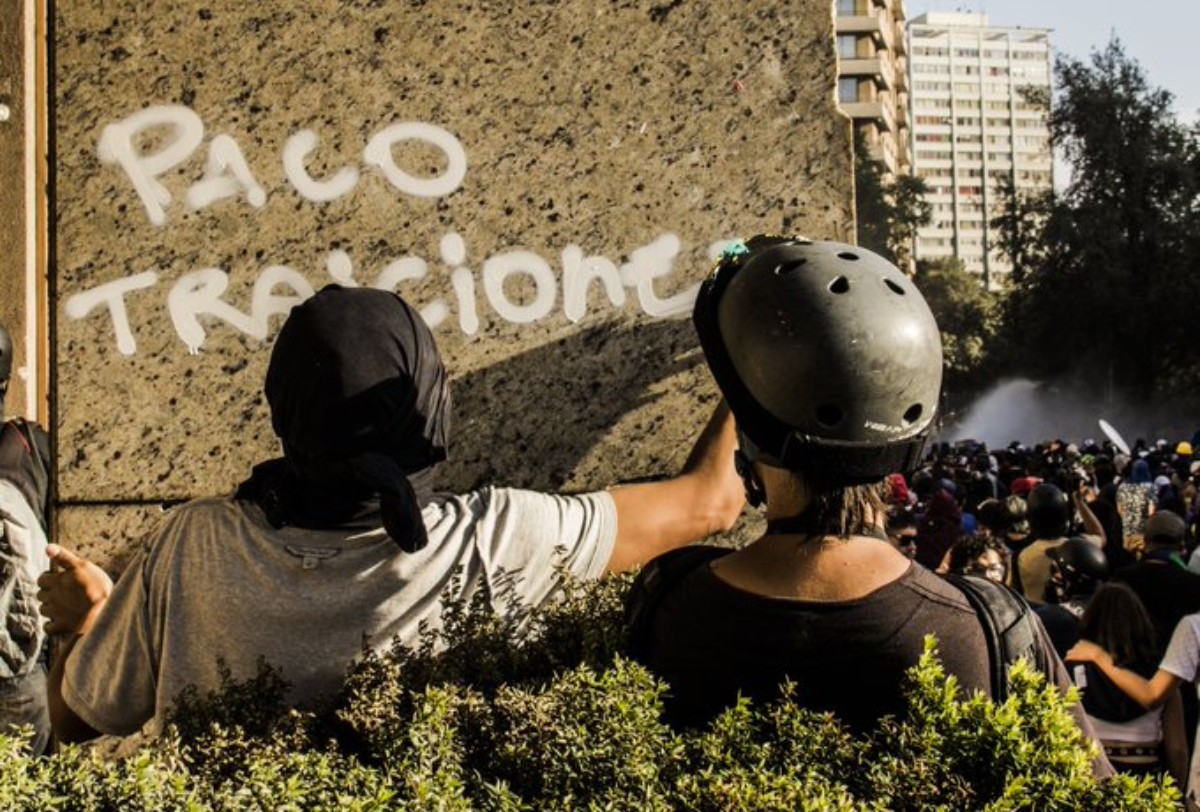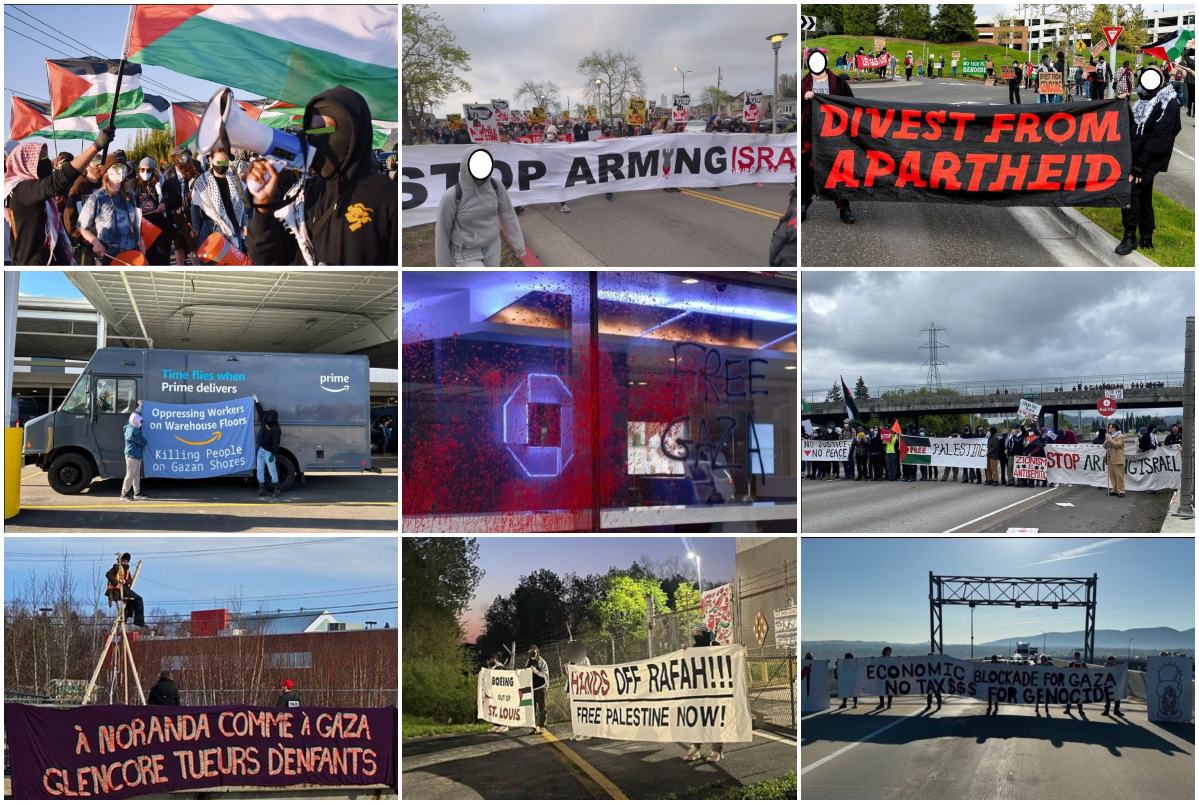Filed under: Analysis, Anarchist Movement

Analysis from the Revolutionary Abolitionist Movement (RAM) about the global and national context.
Over the last decade the possibility of revolt has been ignited around the world – in places people never thought possible. While the constancy of state terror, and the misconception that the state is all-powerful, has kept the tide at bay in the US, these global uprisings inspired comrades here and taught us many lessons about how we can move forward. The need for revolutionary change in America and around the world has become increasingly necessary and ever more likely.
The Arab Spring erupted with unblinking swiftness all around the Middle East. While protests movements powerfully fought back against repressive forces, we saw in real time a valuable lesson. Despite their bravery, these spontaneous protests did not have an organizational foundation, or political consistency. So we saw, for example in Egypt, state power fall into the hands of conservatives.
In contrast, the uprising in Syria created a power vacuum in the northeast of the country, which the Kurds promptly seized upon. They had been engaged since the late 1970’s in building their organization from an explicitly far-left value system, and as such been engaging in guerrilla struggle and building local self-governance in Southern Turkey. They had built up capable forces which were able to act quickly to unseat the remnants of the weakened regime in northern Syria.
The paradigm shift in revolutionary change from seizing the reigns of power to dispersing it was initiated by the Zapatistas in 1994. This was expanded on in the last decade, with more and more indigenous groups in Mexico taking up arms and territory towards local self-determination, and fighting back against right wing forces. Stemming from this paradigm, and taking statelessness as an opportunity, the Kurds in Bakur and Rojava, created an international convergence point for anarchists and revolutionaries, who flocked to the region to support the struggle.
This meeting point, and re-ignition of the anarchist armed struggle, carved a path forward for anarchist militants, and put a spotlight on methods which could be effective for the conditions faced by all those oppressed by particularly authoritarian states. The militant anarchist formations in the region showed anti-authoritarians around the world that what they have been fighting for is within the range of possibility.
We were also taught by the failings of the PKK, which instead of building horizontally towards their friends and supporters, and deepening the revolution through the dispersal of power of the communes and collectives, made concessions in favor of the United States, and their imperial polices, resulting in the loss of revolutionary gains, and their territory.
In Greece, on the other hand, anarchists created capable infrastructure with squatted housing and medical care for the flood of refugees from the Syrian Civil War. They deepened their liberatory work by establishing methods for self-governance. However, with the recent evictions by the right-wing government, we can see that requisite defensive structures must be in place for any civil project to achieve longevity.
The drive towards explicit fascism in the United States preceded Trump’s presidency, with police unabashedly executing black people in the streets, from Oscar Grant to Eric Garner and then underwriting a declaration that police should be able to kill black people without repercussion.
Black Lives Matters erupted in response, a quake from beneath the surface, from beyond the pacifying force of liberal protest, culminating with independent shooters, like Micah Xavier Johnson, firing back at the cops. In 2016 cell blocks shook when the largest prison strike in history was organized across 24 states, against the totalizing anti-black violence of incarceration and to end to prison slavery.
As the Trump regime empowered law enforcement, border patrol, and all fascist apparatuses of the state, we saw children ripped from their families, people swept up by the thousands and held indefinitely in human warehouses, and right wing patrols of the border increase in deadliness and drastic actions. Again an independent actor took it upon himself to fight against Immigration and Customs Enforcement. Willem van Spronsen’s name will be held in high regard by the movement, as his action rose to the seriousness of horrors perpetuated by ICE.
Our movement will never forget our martyrs and will act in their names: Mauricio Morales, Mikhail Zhlobitsky, Lorenzo Orsetti, Korryn Gaines, and Nubar Ozanyan, are held in honor for the necessary actions they have taken. In their honor, we look at the scope of organization we need to create in order to amplify these actions. We look at the next decade as an opportunity to build the infrastructure to challenge the state’s hegemony on force, the strong foundation from which coordinated actions will be possible.
At the end of the 2000’s anarchists in the US and around the world had seen the growth of insurrectionary anarchism but the revolutionary potential of temporary formations, as promoted by this tendency, seemed less possible after the Greek uprising in 2008. However insurrectionary anarchism’s focal point on permanent conflict and fighting back are an essential part of anarchism that has recently been diluted down by stultifying influence liberalism within anarchism in the US.
These tendencies, some by trying to merge anarchism with liberalism, and some by embracing the far right, cater to the affluent and fearful. Their focus has shifted from those who are most oppressed by the US, Europe and their colonial practices, away from the global south, away form those locked in dungeons simply for being poor.
These break-off tendencies may seem innocuous, but put in context of a global recuperation of far-left movements, we can see how pernicious they truly are. In Spain, Podemos promised to bring the momentum of the Movement of the Squares to electoral politics. In Greece, Syriza deflected anarchist time and energy into an electoral strategy and we all saw how under these ’far-left’ state regimes, anarchists were persecuted. More drastically, in Colombia, FARC agreed to a ceasefire, ending a decades-long war, becoming a legally recognized political party and the state immediately began executing activists and indigenous communities from their regions. Again, we see that a conflictual stance against the state is essential, and defense of our gains imperative.
Today, US global power and influence is at it’s weakest point in this century. The US empire is in decline. What was softening during the Obama years, has shifted to a sharp downward trajectory under the Trump regime. Coupled with the decline of the US economy, the poisoned conditions people live in here, the complete degradation of human life in this country, we have a moment where the imperative for revolutionary change couldn’t seem more necessary. We also see material conditions converging to make it difficult for the US to follow through with its imperial threats while also maintaining power back home. We couldn’t have a better time to start our preparations. At this crucial point, when revolutionaries in the US challenge this regime we aren’t just fighting for people at home, we help weaken the capacity of the right wing around the world. Could the Haitian authorities act with such impunity without the support of the US? And would Venezuela or Bolivia’s far right be so empowered without US patronage?
The tenor of the major movements of this decade reflects this: we started with the self-serving rhetoric of occupy: student debt, which transformed to much deeper, foundational struggles form Standing Rock to Black Lives Matters to the National Prison Strike. For the grievances proposed by these movements, the colonial, genocidal practices of the American state must be forcibly halted. The state made that clear in their responses to these movements, yet in the process, those rising up against the state showed their fangs. This is where we start to build for the next decade.
What we have learned from our comrades around the world is that we must build concertedly and steadily. We must build strong and impregnable infrastructure. As we form strong revolutionary collectives in both urban and rural areas, they in turn create resources for, for example, food, housing, and health. Our focus must be on defense from the beginning: what do we need to protect our gains, our infrastructure. And as we build these resources, we must constantly be building our forces, and bidding our time until inevitable crises within the US state and economy opens up the possibility for territorial liberation.
Anarchism’s strength and potential stems from conflict with the state, black, brown, and indigenous populations, and our ethics. During the next decade our solidarity must continue to be fearless and without borders. From the Caribbean to South America to the Middle East, let’s build with comrades who are locked in the battle for liberation. For the next ten years we will be sharing floors to sleep on and tools to fight. And to be clear: anarchism means revolutionary change. There will not be a remnant left of this world.





